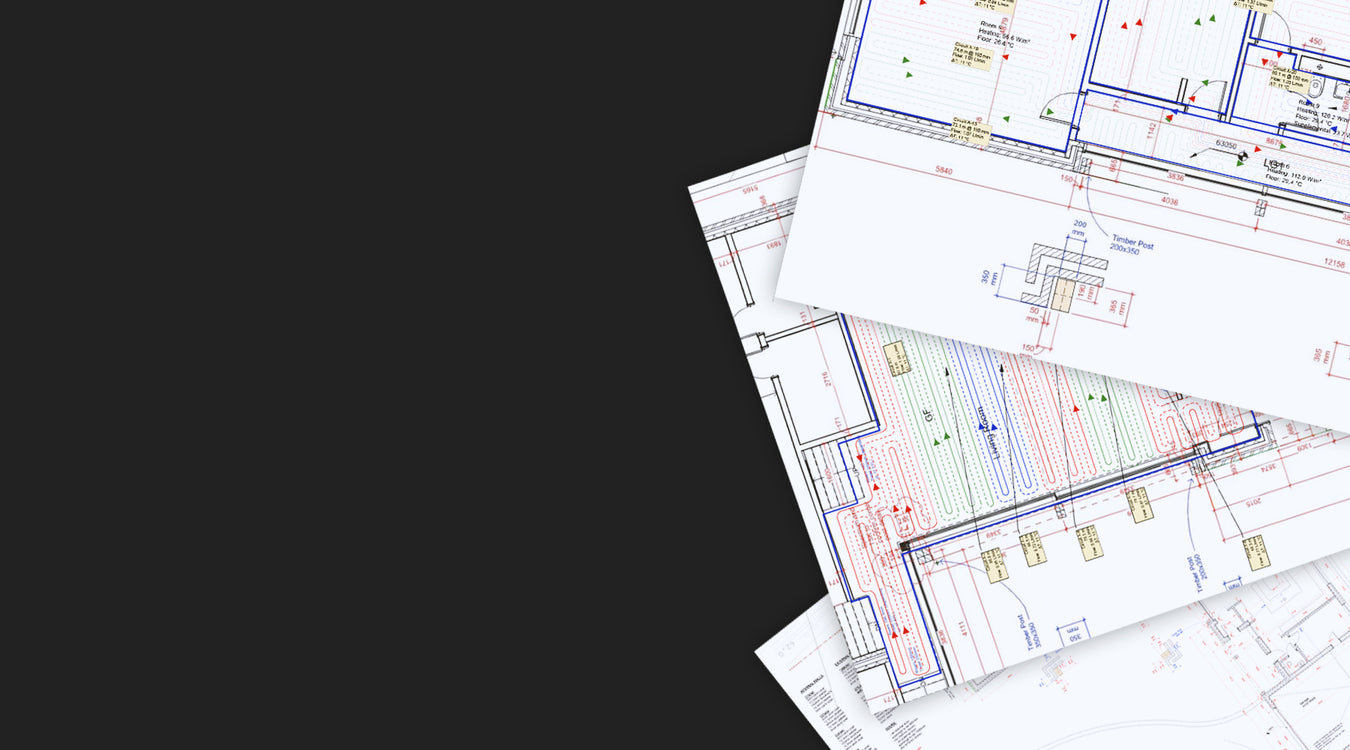Floor Insulation And Heat Output
Floor insulation will affect the heat output of any underfloor heating system because heat can travel downward as well as upward. If there is no insulation fitted then precious heat can be wasted in heating the area below the floor. To ensure no heat is lost, it is essential to fit the right type of insulation. This can be a combination of insulation boards and edge insulation.
A well-insulated underfloor heating system increases output and will work much more efficiently and effectively, delivering a significant saving on heating costs.
What Temperature Should Underfloor Heating Be Set At?
This is a common question and the answer depends on a number of factors. These include the type of floor covering, the type of underfloor heating system, the overall room size and of course your personal preference.
Electric underfloor heating systems can reach higher temperatures than hydronic (wet) systems but for both types of systems, a thermostat setting of between 21°C and 25°C is usually ideal.
To achieve these temperatures, the actual heat output from the underfloor heating system will be approximately twice that number.
What Is A Good Temperature For A Heated Floor?
A good temperature for a heated floor is one that feels comfortable to you. Everyone will have a different opinion on this but the average is usually around 25°C. In smaller rooms, such as the kitchen or bathroom, temperatures can be set a little lower than those in areas that are more frequently used, such as the lounge.
To ensure heat is not wasted, it is highly recommended to have a thermostat installed in each individual room, just as you would with radiators. Being able to control the heat output for each room or zone, will inevitably save on running costs.
How Long Does It Take Underfloor Heating To Warm Up?
An electric underfloor heating system can achieve maximum heat output within 30-60 minutes. A water underfloor heating system will take longer, usually about 2-3 hours because the heat has to penetrate the screed that covers the pipes. However, a wet system is more economical to run and the heat is retained for a longer period, even after the system is switched off.
Bearing in mind how long it takes for an underfloor heating system to warm up, you might want to consider using a smart thermostat, which can be conveniently controlled by your phone. This will allow you to switch on your heating system remotely, in time for when you get home.
What Is The Maximum Temperature For Underfloor Heating
The maximum temperature for underfloor heating is determined by the recommended temperatures for your floor covering. For example, stone, ceramic, terracotta, porcelain and slate can safely be heated to 29°C, while carpet, wood, vinyl and other floor coverings should be limited to 27°C.
The actual flow temperatures required to achieve the desired room temperature can vary between 35°C and 55°C, depending on whether a wet or dry system is installed together with the floor covering type.
Choosing The Right Underfloor Heating For You & Your Home
Underfloor heating is available in 2 types, one being electric underfloor heating, which consists of heat mats of specific sizes or flexible cable and special mats. Typically, wattage can be between 100W and 200W. This type of system is best suited for retrofitting an existing room with the minimum of upheaval. Electric underfloor heating is easier and cheaper to install but more expensive to run.
The alternative is a wet system, which consists of a series of underfloor pipes through which hot water is pumped. However, a water underfloor heating system involves installing underfloor pipework and covering it with screed so this system is best suited to new builds, extensions and major refurbishments. This system will work with an existing condensing boiler or a heat pump and is more economical to run.
Check out our Underfloor Heating Guide for more information and inspiration.

 Get A Free Quote
Get A Free Quote
 Contact Our Team
Contact Our Team
 View Account
View Account

















